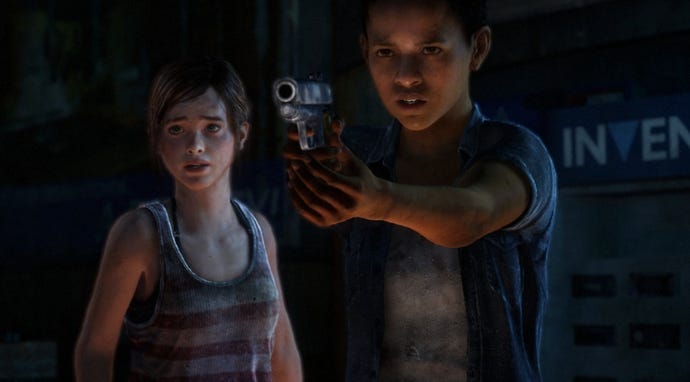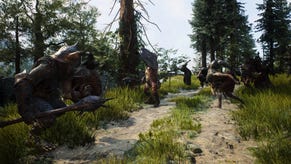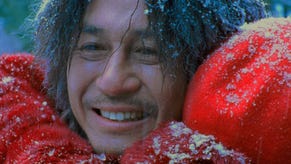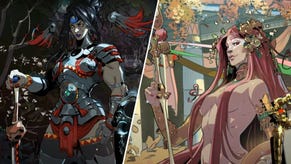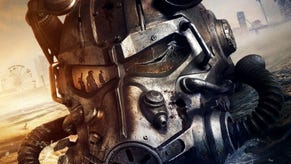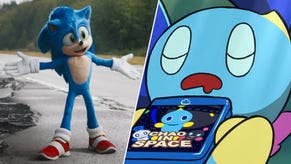The Last of Us: Left Behind - favouring emotion over action
Naughty Dog’s Neil Druckmann discusses how to tell Ellie and Riley’s story in less than two hours and with fewer violent confrontations.
One of the most difficult things to get right with any kind of narrative-driven DLC is making it feel as though it's connected to the main game whilst also feeling like a worthwhile and insightful story in its own right. The cardinal sin of this kind of content is to release something that feels rushed and meaningless, something produced out of cynicism in a clear and obvious attempt at increasing profit margin.
Having now played The Last of Us' Left Behind DLC, and spoken to the game's creative director Neil Druckmann, we're in a better position to talk about how Naughty Dog is attempting to avoid that trap.
For the entirety of Left Behind you're in control of Ellie as you experience the blossoming friendship between her and new character Riley, a 15 year-old girl recently recruited to the world's anti-government group The Fireflies.
"While making the full game I was writing The Last of Us: American Dreams graphic novel with Faith Erin Hicks, which tells the story of how Riley met Ellie and how Ellie started to change because of that," explains Druckmann as he recounts how Left Behind came into existence.
"There has always been that gap between the comic book and the main campaign and we had some ideas about how those gaps would be filled in, but the finer details weren't there.
"As soon as the opportunity came up to do another The Last of Us chapter to flesh out the story we were really drawn to the idea of filling in those gaps. The challenge then became about making the characters and story feel like they could exist by themselves - whether the characters have their own arcs that feel real within this story and, maybe more importantly, whether this gives you more insight into who Ellie is and why she has made certain decisions."
Undoubtedly, the emotional state of Ellie and the events that have resulted in the formation of her personality are the driving force behind Left Behind. Combat, puzzles and many of the more action-orientated interactions that punctuated our time playing as Joel in the main game are at a minimum here.
"With Left Behind it was about how we, even outside of combat, build mechanics and scenarios that build and demonstrate the bond between Ellie and Riley"
In their place are moments that could be unfairly written off as simple mini-games. However, these are designed to get closer to the core of both Ellie and Riley's motivations and how they attempt to deal with their place amongst the terror inside which they're trapped. It's the structure and way in which these moments stack upon one another that is so impressive, though, highlighting Naughty Dog's ability to execute the seemingly simple in a way that turns it into something with an altogether different and significantly magnified tone.
"The challenge that we constantly give ourselves is how we use video game mechanics and interactivity to get you to better relate to these characters," says Druckmann. "With Left Behind specifically it was about how we, even outside of combat, build mechanics and scenarios, and sometimes minigames, that build and demonstrate the bond between Ellie and Riley.
"That was a big challenge."
Left Behind is the length of a movie and, as such, the approach to storytelling does feel very different to that used to explore the characters of Joel and Ellie in the original campaign.
"In some ways the shorter length has made it a more difficult story to write," Druckmann continues. "We could really take our time with Joel and Ellie because we saw them over such a comparatively long period in their lives, we could really flesh those characters out.
"With Riley, seeing as Left Behind is a couple of hours long, it was more a case of working out the most efficient way for us to get you to buy into who she is and buy into the relationship between her and Ellie.
"That was actually a really big challenge and it took a lot of iteration on the dialogue and interactions to get that feeling right. Really, it was iterated on a lot."
While Left Behind features comparatively fewer moments which we would traditionally describe as 'set-pieces', the concentration on dialogue and character-to-character interaction means you're not left wanting for a sense of engagement or drama. In an explicit sense Left Behind is less exciting than the main game, but its overall levels of satisfaction and fulfilment are at least its equal.
There are still moments of combat, though, albeit ones that play out in a slightly different way than when we were in charge of Joel. Ellie is significantly less well-armed than Joel, making stealth the intelligent approach - as opposed to simply an optional one. To make things more interesting there's a focus on multi-faction combat, with bandits and infected appearing in the same space at the same time.
Managing the situation, rather than diving into it, seems to be the best plan of attack as it's possible to play the two sides off of one another. Working out a suitable means of forcing the two factions into combat with each other, as you watch and wait from a position of relative safety, is a new skill that must be learned quickly if you want to avoid confrontation. Picking off any remaining stragglers is a much better option than trying to pick off entire gangs.
"Even with the main The Last of Us we went past our comfort zone when it came to having so few combat encounters," Druckmann discusses when probed about the scarcity of Left Behind's combat. "No one complained that there wasn't enough combat, though, so that gave us confidence.
"With Left Behind we wanted to push that concept even further and have even fewer combat encounters and see how people react to that... see if they still like it and whether or not it still works for them.
"We wanted to push that concept even further and have even fewer combat encounters and see how people react to that... see if they still like it."
"In a lot of ways it was more challenging to do less combat because we know how to do combat really well and have the experience of doing it from the main game. To come up with clever minigame stuff was actually a lot harder to do. I think those were as hard to do as the entire collapsing building sequence in Uncharted 2."
Just comparing those moments in Left Behind with that sequence from Uncharted 2 demonstrates the kind of gravity Naughty Dog is aiming for with the story of Ellie and Riley. This is a studio that has well and truly proven its ability to tell adventure stories of physical and objective-based exploration within worlds fraught with danger.
It's now time to show that they can provide the sorts of stories that delve deeply and responsibly into the exploration of a character's own self - their desires, their needs and how their past has shaped their present.
You can be the judge of whether or not they've achieved that when Left Behind is released on 14 February.
